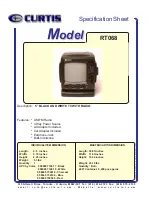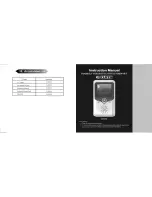
8
Stability considerations
The AC1000 contains a power amplifier with a bandwidth of several kHz. Its stability depends
upon both the supply and the load having reasonably low and non-reactive impedances across
this frequency band. Instability is more likely with inductive reactance. If instability should arise it
can usually be cured by adding a resistive load across the output of the unit (between the
AC1000 and the HA1600 if harmonics are being measured). A 60W filament lamp is often
sufficient,
Voltage, Frequency, Power and Harmonic Purity in CORRECTED Mode
The AC1000 does not change the frequency of the incoming AC supply. Note that not all national
supplies guarantee to meet the ±0·5% frequency specification required by EN61000-3-2,
although in practice this will generally be the case.
Similarly, local supply voltage variations mean that the AC1000 will not generally meet the ±2%
voltage tolerance required by EN61000-3-2 unless it is supplied from a variable voltage of
suitable power rating such that the output voltage can be adjusted to the required limits. In
practice this is easily done because the supply voltage changes quite slowly, giving a reasonable
time within specification before further adjustment is needed.
The AC1000 will supply up to 1000VA at 230V, up to 500VA at 115V or up to 440VA at 100V; the
maximum load current in all cases is 4·4Arms or 10A peak.
Because the input distortion of the incoming AC supply is undefined it is not possible to guarantee
the harmonic purity of the output. However, in practice the AC1000 will produce an output which
meets the stringent source requirements of EN61000-3-2 even when the AC supply is severely
distorted.
If the AC1000 is being used as a power source for a HA1600, the HA1600 can be used to monitor
the quality of the corrected supply voltage. Voltage, frequency, harmonic distortion and crest
factor can be continuously monitored and a 'PASS' or 'FAIL' message shown in the Meter display
to indicate whether the corrected source is compliant with the requirements of EN61000-3-2 or
not.
Maintenance
The Manufacturers or their agents overseas will provide repair for any unit developing a fault.
Where owners wish to undertake their own maintenance work, this should only be done by skilled
personnel in conjunction with the service manual which may be purchased directly from the
Manufacturers or their agents overseas.
Cleaning
If the instrument requires cleaning use a cloth that is only lightly dampened with water or a mild
detergent.
WARNING! TO AVOID ELECTRIC SHOCK, OR DAMAGE TO THE INSTRUMENT, NEVER
ALLOW WATER TO GET INSIDE THE CASE.
TO AVOID DAMAGE TO THE CASE NEVER CLEAN WITH SOLVENTS.
Telemeter Electronic GmbH | Joseph-Gaensler-Str. 10 | Phone +49 906 70693-0 | Fax +49 906 70693-50 | www.telemeter.info
9










































